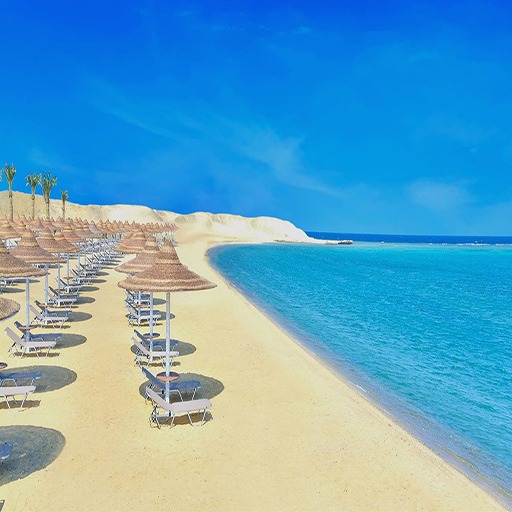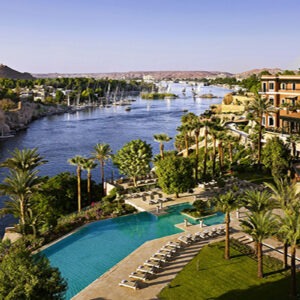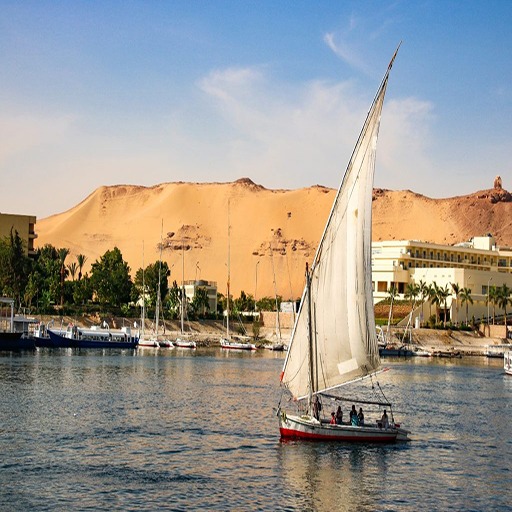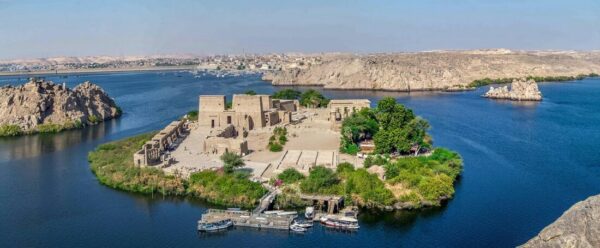King Seti I
He is one of the kings of the Nineteenth Dynasty. He is the son of King Ramesses I and Queen Sat-Ra. He was born in 1303 BC. His personal name is “Siti Meran Ptah,” attributed to the god Set, beloved of the god Ptah. He was given many names when he assumed the throne, including “Min Ma’at Ra,” which means immortal, he is the justice of Ra, and his most common and original name is “Siti Meren Ptah,” which means the man of six or the beloved of Ptah.
The Greeks called him “Sothosis.” His main wife was Queen Tuya, and he had three sons, one of whom was King Ramesses II, successor to King Seti I in power.
King Seti I had three children, two sons and a daughter. The eldest son died, and after the death of King Seti I, his youngest son, “King Ramesses II,” assumed the throne. According to some historians, King Seti I ruled the country in the period from 1294 BC or 1290 BC until the year 1279 BC or 1302 BC, and King Seti I consolidated Egyptian authority in Palestine and the Levant and successfully resisted the Hittites who ruled Asia Minor, as he carried out many military campaigns against the Hittites and concluded a peace treaty with the Hittites not to attack them, as this was the period of King Seti I’s rule. One of the most important periods of rulers who assumed the throne throughout ancient times.
Monuments built by King Seti I:
King Seti I erected many monuments, including the Monument in Abydos, and dedicated a number of gods to worship. The temple contains an ancestral hall containing a list of the names of kings from the founding of the first dynasties to King Seti I, the Qurna funerary temple in Thebes, and the hypostyle hall covered by Karnak, which was built before However, it was decorated during the reign of King Seti I with beautiful ritual scenes and elegant pictures on the external walls showing in the eye of the beholder the victories of King Seti I over the Bedouins, Libyans, and Amorites in Kadesh and the Hittites.
King Seti I also ordered the erection of an obelisk known as “Flamnius,” but he died before completion. It was engraved and completed by his son, King Ramses II, and it is now located in People’s Square in Rome.
The buried godmother:
At the beginning of the reign of King Seti I, a great and prominent interest in the holy city of Arrabah appeared, and interest in it dates back to the fourth year of his reign, as he founded a temple called “Beit Maat Ra” to comfort the heart in Arrabah at that time. Some historians believe that it is the proper name. Which is called the famous Temple of the Godmother, while others think otherwise, as the Great Temple of the Godmother is the most famous temple erected by King Seti I in Egypt and other countries of the Egyptian Empire, where the rituals of the six important gods of Egypt are venerated in (The Godmother), and also are held. It contains the funeral rites of the ancient kings of Egypt.
The policy of King Seti I:
King Seti I was, in the beginning, before the death of his father, King Ramesses I, his partner in the kingship, as he was a determined soldier and warrior. He was the man that Egypt needed in that period of its history. In fact, King Seti I was from the beginning of his accession to the throne, and he was following a clear, upright approach. Following in this the main policy that was established and established by “Horemheb”, which aimed to restore Egypt’s policy and eliminate the vices of the past era of deviation. King Seti I believed that if Egypt wanted to restore its ancient position in the world, it must have two necessary things: a stable and consolidated government. The pillars at home, and the reopening of the Egyptian empire that had been torn apart, and the first condition must be fulfilled before the second.
Death of King Seti I:
King Seti I died in 1279 BC. It is believed that King Seti I died before the age of forty, unlike King Ramesses I and King Ramesses II, who died at advanced ages.
The cause of King Seti I’s death is unknown. A mummy was found beheaded by tomb robbers. The mummy was transferred to the Egyptian Museum in Cairo. As for the coffin, it was carved with a single piece of alabaster and has wonderful engravings on it. It is in a museum in London, where the tomb of King Seti I was found in the year 1817, and it is tomb No. 17 in the Valley of the Kings. It is one of the most beautiful tombs in the Valley of the Kings. The tomb is carved into the rock and contains drawings of King Seti I worshiping his gods, and it also contains inscriptions of many books.
Egypt Tours to The Monuments Built by King Seti I
-
From $1440 🎗 10% OFFAswan, Cairo, Egypt, Luxor

 Sale! Add to cart
7 Days Deluxe Nile cruise + Domestic Flights
Sale! Add to cart
7 Days Deluxe Nile cruise + Domestic Flights7 Days Tour To Egypt with Cairo, Aswan, Luxor, and Nile Cruise
Rated 5.00 out of 5Nile Cruise$2,000.00$1,600.007-Days Tour To Egypt with Cairo, Aswan, Luxor, and Nile Cruise Egypt Cruis Era provides you with a 7 days tour to Egypt that covers the essentials of Cairo, Aswan, Luxo -
From $1275 🎗 0% OFFAbu Simbel, Aswan, Cairo, Edfu, Kom Ombo, Luxor

 Sale! Add to cart
5 Days Deluxe Nile cruise + Domestic Flights
Sale! Add to cart
5 Days Deluxe Nile cruise + Domestic Flights5 Day Cairo, Luxor, Edfu, Kom Ombo, Aswan and Abu Simbel
Rated 5.00 out of 5Egypt Tour Packages$3,500.00$2,800.00Why you’ll love this trip: Explore the great and historical Egypt including: Cairo, Luxor, Edfu, Kom Ombu, Aswan & Abu Simbel. You’ll cover the -
Why you’ll love this trip: Experience the mysteries and treasures of Egypt in 8 nights trip. Embark on a leisurely paced 3-night cruise on the Nile, the
-
What to bring with you? A trip to Egypt takes you to a mystical destination where you can discover th
-
From $720 🎗 0% OFFCairo, Luxor, Marsa Alam

 Sale! Add to cart
2 Days Deluxe Nile cruise + Domestic Flights
Sale! Add to cart
2 Days Deluxe Nile cruise + Domestic Flights2 Day Cairo and Luxor from Marsa Alam by Flight
Rated 5.00 out of 5Egypt Tour Packages$3,500.00$2,800.00Why you’ll love this trip: Unravel the ancient sights and secrets of Luxor and Cairo on this private 2-day tour from Marsa Alam, with flights and ove -
Full day tour to Cairo from Aswan by flight
Rated 5.00 out of 5Egypt Tour Packages$3,500.00$2,800.00Why you’ll love this trip: Enjoy a full day trip to Cairo to visit the Great Pyramids, The Egyptian Museum and the Old Cairo. Very comfortable – Pickup










